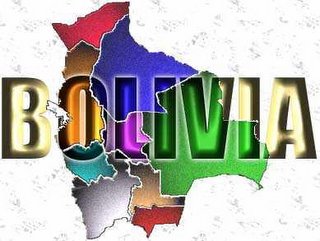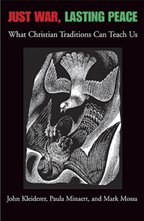"Coca Leaf is not a Drug"

A few years ago I spent the summer in Bolivia. It is beautiful and rich country and culture that, frankly, we don't hear enough about in the U.S. Bolivia is one of the poorest countries in LatinAmerica. It also has the largest indigineous population of any country there. The people there are welcoming and, among the things I most appreciated, they speak slow, clear Spanish, making it a great place to learn Spanish. The Maryknoll Fathers and Sisters have a great language school there in Cochabamba, which I attended.
But one of the most eye-opening things to me was to learn the extent to which Coca, which is manufactured into tea, or simply kept in raw leaf form and chewed on, is a central part of their culture. Coca is something of a cure-all in that culture, having a place comparable to that in the United States of chicken soup. Thus to demand that Bolivians stop growing Coca because it is an ingredient in Cocaine, as the US has to a certain extent in its war on drugs, is somewhat naive and threatens to have a huge impact not only economically, but culturally. In the US media, we rarely if ever see this side of the story. Thus, I recommend checking out the recent lengthy article in the New York Times as it offers a glimpse into the complex reality in Bolivia, one you're unlikely to see again for a while.
Che's Second Coming?
By DAVID RIEFF
Published: November 20, 2005
The Bolivian Congress is an ornate building in the Spanish Colonial style. It is also a study in cognitive dissonance. Located on the Plaza Murillo, one of the central squares of Bolivia's main city, La Paz, it is flanked by the Presidential Palace, the Cathedral and the mausoleum of Bolivia's second president, Andrés Santa Cruz, who fought alongside Simón Bolívar. Around these decorous buildings, soldiers in red pseudo-19th-century uniforms stand at attention or march ceremoniously from point to point. Were it not for the fact that most of these young recruits have the broad Indian faces of the Andean altiplano, or high plains, and that those gawking at them in the square are also themselves mostly indigenous, it would be easy to become confused and believe you were in some remote corner of Europe, albeit the Europe of a century ago.
Inside the Congress, this effect is, if anything, even stronger: marble floors, waiters wearing white shirts and black bow ties, photos on the walls in the office wing of the building, many now yellowing with age, that show previous generations of congressmen among whom there is barely an Indian face to be seen. The burden of this faux-Europeanness seems overwhelming, until, that is, you walk down one of the main corridors and, at its end, find yourself confronted with an enormous, colorized, Madonna-like image of Ernesto (Che) Guevara, Fidel Castro's comrade in arms, the archrevolutionary who died 38 years ago in the foothills of the Bolivian Andes trying to bring a Marxist revolution to Bolivia, then as now the poorest and most racially polarized country in South America.
"This is a sanctuary to El Che," says Gustavo Torrico, an influential congressman from the radical MAS party, gesturing around his office. (Though mas literally means "more," the Spanish acronym stands for "Movement Toward Socialism.") There are not just a few pictures of Che; there are literally dozens of them, big, small and in between: Che with Castro, Che in the field, Che with his daughter in his arms, smiling, smoking, exhorting. The effect is overwhelming.
And yet, in Bolivia these days, Che's image is hardly restricted to the office of a few leftist politicians. To the contrary, it is everywhere. It stares down at you from offices and murals on city walls of La Paz and of Bolivia's second-largest city, Cochabamba, in working-class districts and slum communities and university precincts. In Bolivia, Che's image is not a fashion statement, as it is in Western Europe. When you see people wearing Che T-shirts, or sporting buttons with the martyred revolutionary's face, they are in deadly earnest. In Bolivia, only images of the Virgin Mary are more ubiquitous, and even then it's a close-run thing.
Read the rest here.






1 Comments:
The article misses an important point -- there remains a legal traffic in coca leaves to this country, and the major importer is Coca-Cola. Though they've long treated the leaves to remove what could be turned into cocaine, they've never taken out the coca leaves, which Coca-Cola will tell you on the tour remain an important ingredient for flavor purposes.
Post a Comment
<< Home